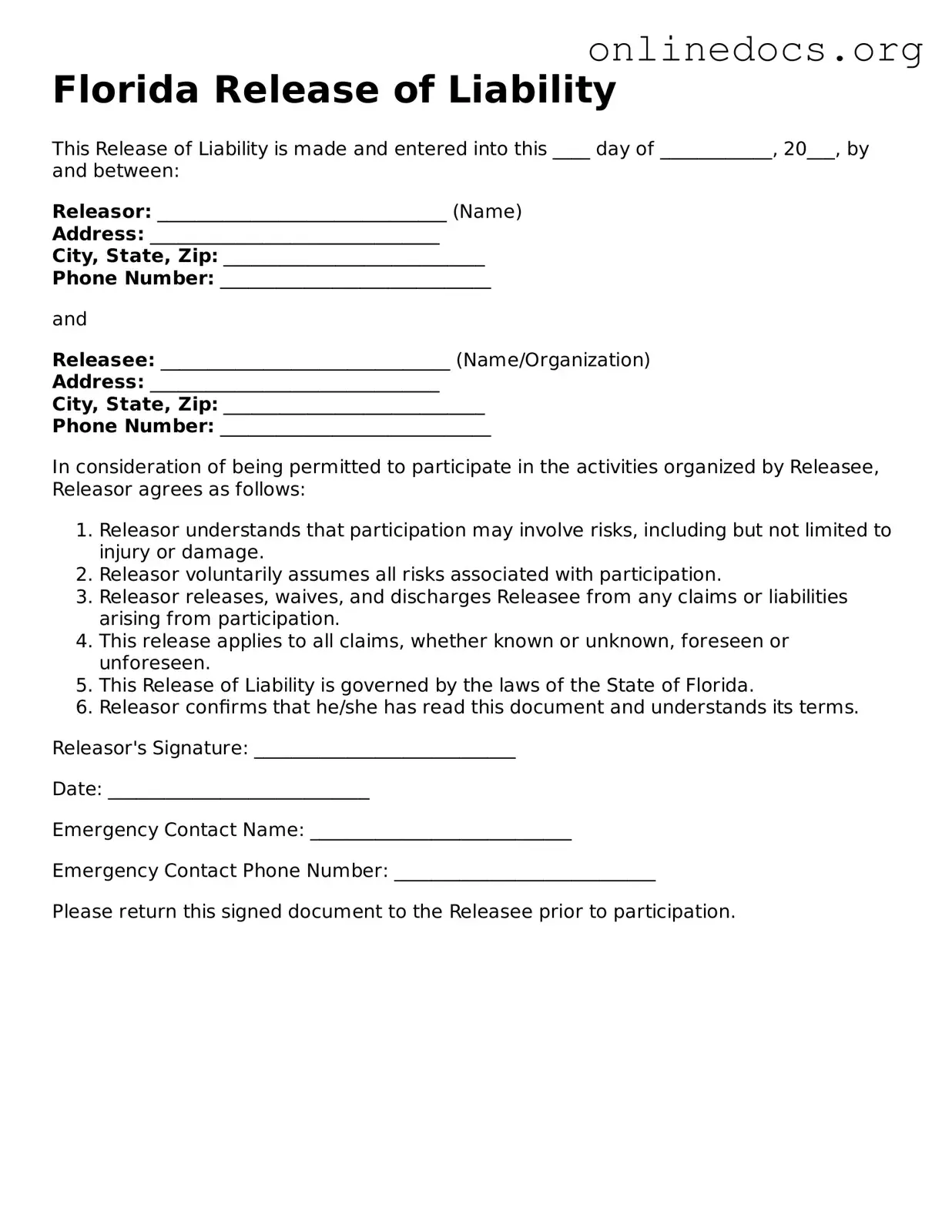The Florida Release of Liability form is similar to the General Waiver and Release of Liability. This document is often used in various activities, including sports and recreational events. Like the Florida form, it serves to protect the organizer from claims arising from injuries or damages that may occur during the activity. Participants acknowledge the risks involved and agree not to hold the organizer responsible for any incidents that may arise.
Another comparable document is the Participant Agreement. This agreement is typically signed before engaging in activities such as camps, classes, or workshops. It outlines the responsibilities of the participant and the risks associated with the activity. By signing, participants give up their right to sue for injuries, similar to the release of liability form in Florida.
The Indemnity Agreement is also akin to the Florida Release of Liability form. This document requires one party to compensate another for losses or damages. While the release of liability focuses on waiving the right to sue, the indemnity agreement emphasizes financial responsibility for any claims that may arise from the activity.
The Assumption of Risk Agreement shares similarities with the Florida form. This document is often used in adventure sports or activities with inherent risks. Participants acknowledge the dangers involved and agree to assume those risks. Like the release of liability, it aims to limit the liability of the organizer for any injuries that may occur.
The Consent to Treat form is another related document. While it primarily addresses medical treatment, it often accompanies liability releases in recreational settings. Participants give consent for medical treatment in case of an emergency, thereby acknowledging the potential risks associated with the activity. This form complements the release of liability by ensuring that participants understand their health risks.
The Medical Waiver form is similar in purpose to the Florida Release of Liability. It is used to protect organizations from claims related to medical emergencies or injuries. Participants agree to waive their right to hold the organization liable for any medical issues that may arise during the activity, reinforcing the protective nature of the release of liability.
The Vehicle Release of Liability form is essential for ensuring that both parties in a transaction fully understand and accept the legal implications of transferring vehicle ownership. It safeguards the seller from any future claims related to the vehicle once the transaction is complete. This understanding of liability is crucial in various contexts, including online transactions, as outlined by resources such as UsaLawDocs.com, which provides valuable information regarding the proper handling of these legal documents.
The Liability Disclaimer is another document that serves a similar function. This is often found in contracts for services or products. It informs users of potential risks and limits the liability of the provider. Like the Florida form, it aims to mitigate legal exposure by ensuring that users acknowledge and accept the risks involved.
Lastly, the Release of Claims form aligns closely with the Florida Release of Liability. This document is used to relinquish any claims against an organization or individual. Participants agree not to pursue legal action for any injuries or damages incurred during an activity, effectively protecting the entity from lawsuits. This form reinforces the concept of informed consent and risk acknowledgment.
